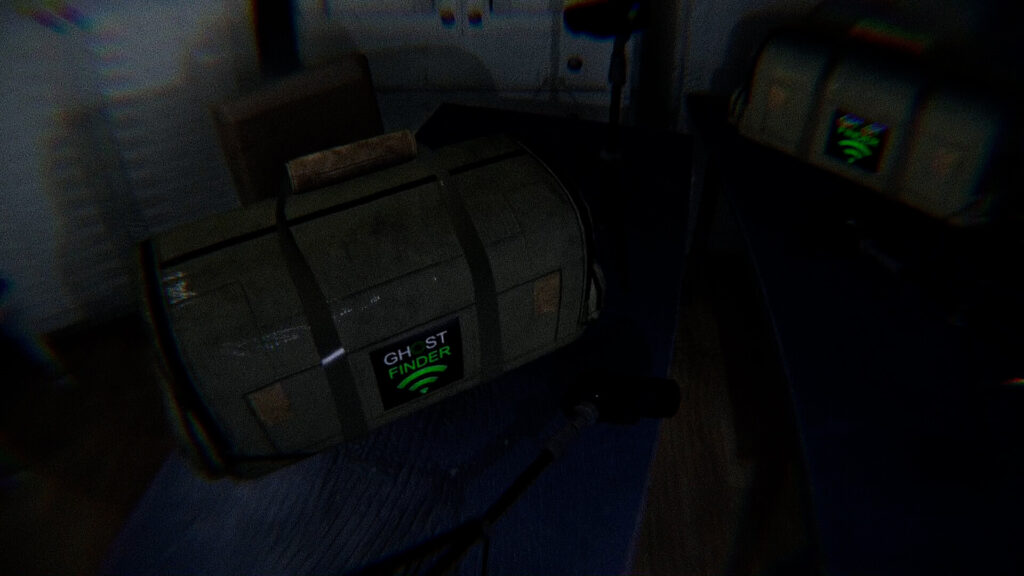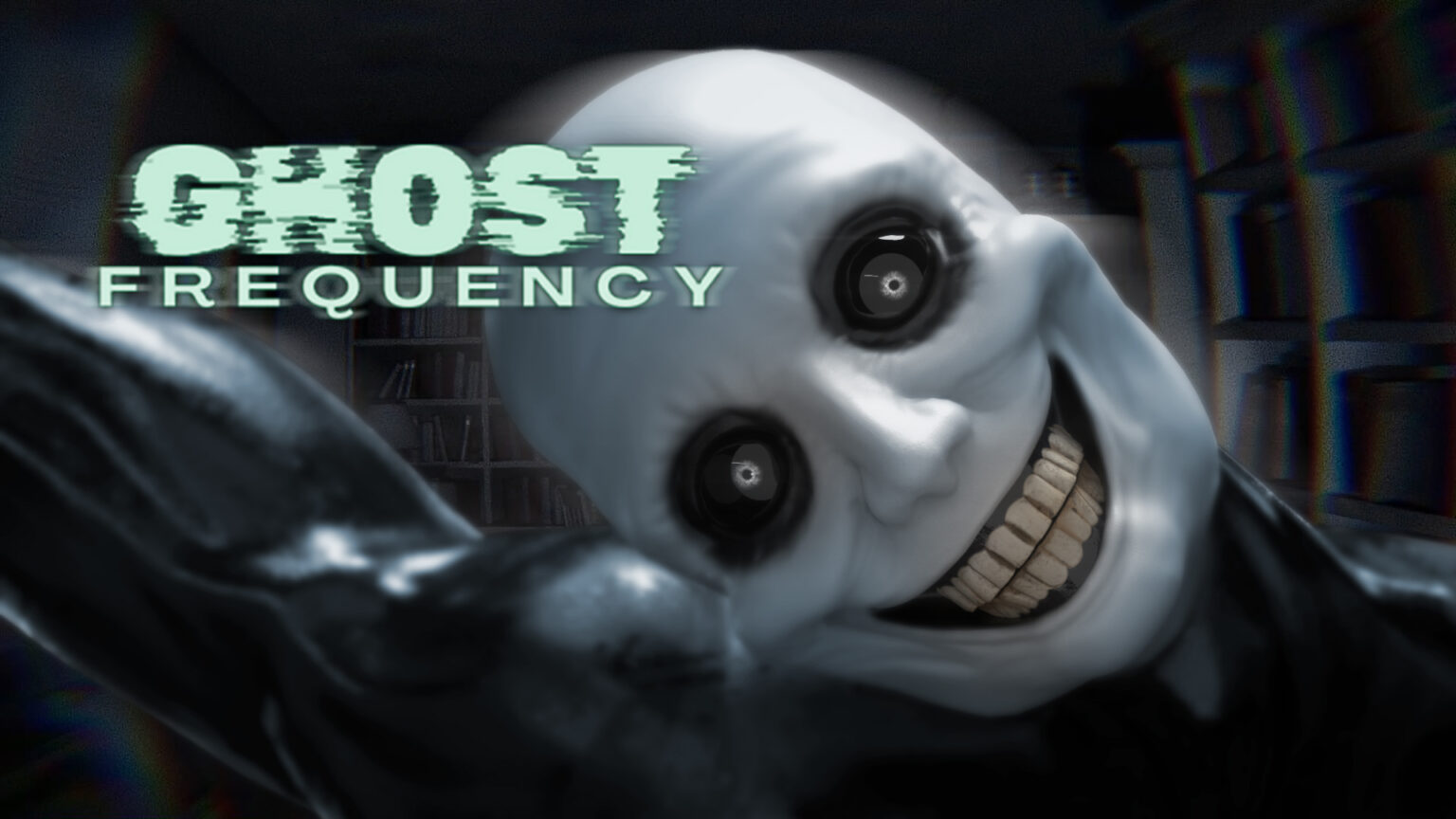Ghost Frequency isn’t interested in jump scares for shock value or throwing a dozen ghosts at you in the first five minutes. Instead, it wants you to listen—to the static in your EVP recorder, to the silence behind the walls, to the sound of your own nerves betraying you.
Developed by PIT GAMES—the same real-world ghost-hunting team behind the Ghost Finder Tools app—Ghost Frequency trades bombastic horror tropes for slow, deliberate dread, powered by investigative tools modeled after real tech. The result is a tense, first-person ghost sim with serious ambition… and a few bumps in the dark along the way.
👻 What Is Ghost Frequency?
You play as Mark, a veteran member of the PIT (Paranormal Investigation Team), called to investigate the disappearance of two fellow investigators, Ben and Lisa. With only a flashlight, your voice-in-the-van colleague Emily, and a trio of paranormal detection tools, you step inside a decrepit, haunted house. The rest is up to you.
Everything unfolds from a bodycam perspective, lending the game a gritty, found-footage realism that works exceptionally well. Every creak in the floor, every flicker of static, feels immediate—like you’re really there, and maybe you shouldn’t be.

🧭 Gameplay Breakdown
Ghost Frequency centers around paranormal investigation. Instead of running from monsters or solving traditional puzzles, you’ll be using real-world ghost hunting gear to track activity and uncover the truth.
Your main tools include:
- EMF Ghost Detector – Detects electromagnetic fluctuations to reveal nearby entities.
- IR Thermal Camera – Picks up hidden heat signatures the human eye can’t see.
- EVP Digital Recorder – Records ghostly voices from the beyond.
These tools are smartly implemented. They’re not there to flash “BOO!” on the screen—they’re meant to draw you deeper into the tension. You’re constantly reacting to subtle changes in readings, interpreting sounds, and trying to piece together what happened to the missing investigators. The horror builds from the unknown, not from gore or chaos.
Navigation is tight and atmospheric, with most of your time spent in a creepy, abandoned house filled with locked doors, flickering lights, and all-too-quiet hallways. Later in the game, this atmosphere gives way to a dark maze sequence that, while conceptually interesting, nearly derails the pacing (more on that later).

🎧 Visuals & Sound
The visuals serve their purpose without going over the top. The bodycam style, complete with low-light haze and grain, adds a layer of immersion that more polished horror games often miss. The environment feels dirty, old, and believable.
Audio design does the heavy lifting. Whispered voices, garbled recordings, sudden drops in sound, and distant footsteps are unnerving without being cheap. It’s not just scary—it’s uncomfortable in all the right ways.
Voice acting, especially between Mark and Emily, is surprisingly solid. Their banter and updates provide just enough humanity to keep you grounded while the rest of the game works to tear that sense of safety away.
🔦 Where It Falters
Despite the strong foundation, Ghost Frequency stumbles in the final act—literally.
A late-game section drops you into a pitch-black labyrinth with no clear direction, minimal environmental feedback, and an enemy that appears randomly with little warning. This segment feels less like horror and more like trial-and-error frustration.
Even with the brightness cranked up, many players will find themselves wandering aimlessly, dying without context, and repeating sections not because they’re challenging—but because they’re poorly signposted. It breaks the immersion built so carefully in the first half of the game.
The story also ends abruptly, without much resolution or deeper insight into the fate of your missing teammates or the entity haunting the house. It feels like the first chapter of something bigger, and that’s both a compliment and a critique. The potential is there—but right now, it’s mostly setup.

✅ The Good Stuff
Atmosphere That Sticks
The game is quiet when it needs to be, unsettling when it matters, and rarely overplays its hand.
Realistic Paranormal Tools
The EMF reader, IR camera, and EVP recorder all feel useful, grounded, and immersive—less gimmick, more gameplay.
Found-Footage Perspective
The bodycam design gives the game an intimate, claustrophobic feel that works brilliantly in the horror genre.
Solid Audio Work
From creaks and whispers to ghostly recordings, the sound design does heavy lifting without leaning on constant jump scares.
Voice Acting & Dialogue
The character work between Mark and Emily is believable and well-delivered, giving the story a bit more grounding.
❌ Where It Struggles
Maze Design
The final act’s dark maze is poorly lit, confusing to navigate, and heavily reliant on random ghost spawns. It kills the momentum and feels unfair.
Short Runtime
Expect 60–90 minutes for a full playthrough. That’s not a dealbreaker, but it makes the price-to-content ratio questionable for some.
Underdeveloped Story
There are hints of something deeper—Ben and Lisa’s disappearance, the ghost’s origin—but little payoff. It ends just as things get interesting.
Minimal Replay Value
With no procedural elements or branching paths, the experience is largely the same on repeat.
Ghost Frequency: Ghost Frequency is a clever, unsettling horror game that focuses more on mood and realism than gore and action. Its commitment to real-world ghost hunting techniques and grounded investigation gameplay gives it a unique edge over typical indie horror fare. But for all its strengths, it feels like a teaser for a bigger game. There’s atmosphere, tension, and great tools—but the story ends before it can say anything meaningful, and the maze sequence leaves a sour aftertaste. Still, if you’re into slow-burn horror and want something that treats ghost hunting seriously (without taking itself too seriously), Ghost Frequency is worth experiencing—especially with the lights off and headphones on. – ColdMoon


